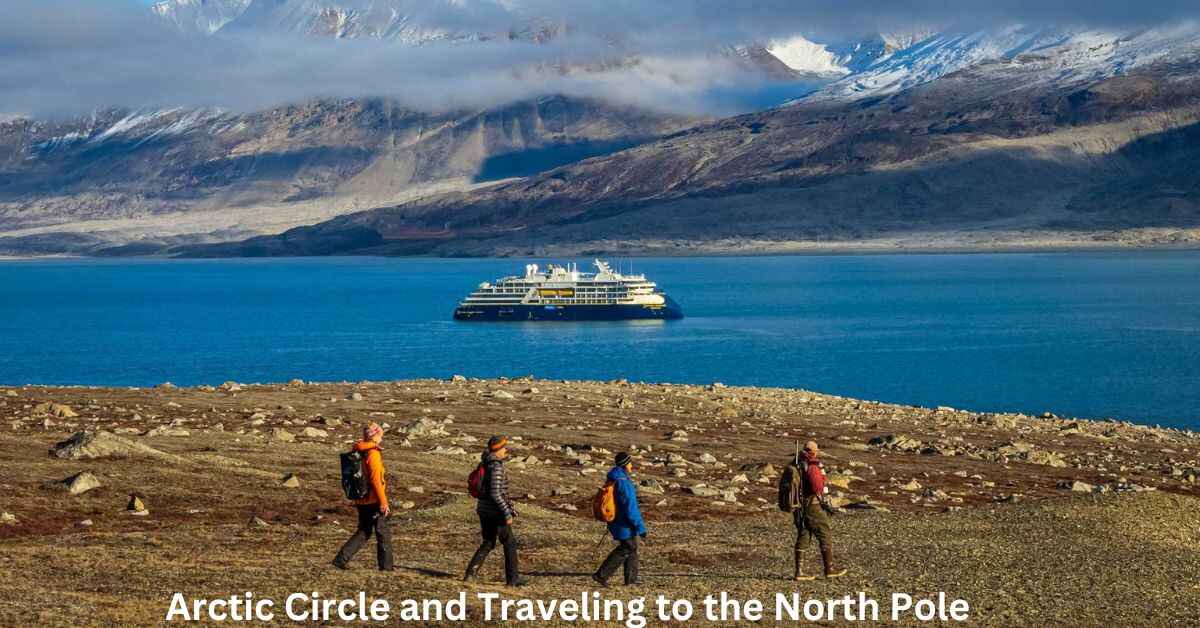To get to the Arctic Circle, fly to northern Norway, Sweden, or Finland. For the North Pole, join a guided tour or an icebreaker cruise from Russia. Dress warmly and plan for extreme cold. Pack essentials like food, water, and emergency gear. Always travel with an experienced guide. Enjoy the stunning scenery and wildlife. Remember, it’s a remote and challenging destination, so prepare well!
Where is the Arctic Circle Located?
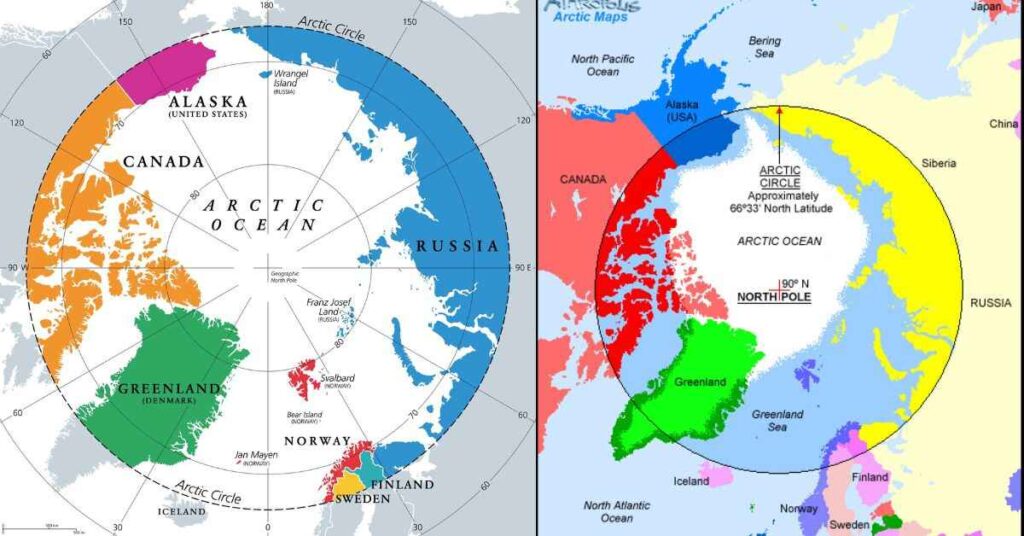
The Arctic spans the top of the globe, forming an extraordinary icy wilderness. It stretches across eight countries: the United States, Canada, Finland, Norway, Sweden, Russia, Greenland, and Iceland.
This vast region is defined by the Arctic Circle, an invisible line that circles the Earth at 66°33′ north latitude. To visit the Arctic Circle, you’ll need to journey north and cross this boundary that separates the frigid Arctic zone from the more temperate regions below.
Are You Allowed to Go to the Arctic?
The good news is that the Arctic is very much accessible to curious travelers. You can explore this frozen frontier via overland journeys, traveling above the Arctic Circle within the countries that it bisects.
However, for a more comprehensive Arctic experience, many opt to embark on expedition cruises, which allow you to efficiently traverse multiple regions and discover remote, rugged shores that can’t be reached by road.
Read This Blog:
Are You Allowed to Visit the North Pole?
Reaching the northernmost point on Earth – the North Pole – is an entirely different endeavor. It requires a monumental effort and there are very limited options available. Some intrepid adventurers seek the hard-earned bragging rights that come with this challenge, but it’s important to consider whether you’re after just checking a box or truly immersing yourself in the Arctic region.
For a richer, more meaningful experience, destinations like northern Greenland and Canada’s Ellesmere Island, which lie above 80 degrees north, offer incredible wildlife, cultural encounters, and opportunities for active exploration.
How Do I Get to the Arctic Circle?
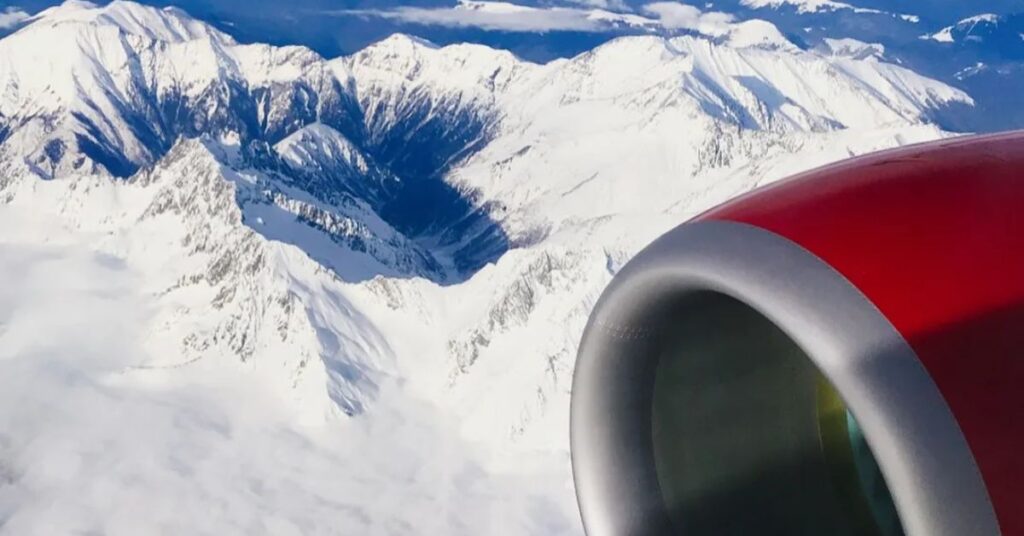
The route to the Arctic Circle will depend on which specific region you plan to explore and with which travel provider. Lindblad Expeditions-National Geographic, for example, offers 18 unique Arctic cruise itineraries that span from Norway to Greenland to the Canadian Arctic and beyond.
Generally, these Arctic adventures begin with a flight from your hometown to a gateway city like Oslo, Norway or Reykjavik, Iceland. From there, you’ll typically meet up with expedition staff who will transfer you to the port to board your ship.
Also Read this Blog:
How to Plan a Day Trip from Florence to Cinque Terre: All You Need to Know (2024)
How to Get to Svalbard (Spitsbergen)
When visiting the Svalbard archipelago, you’ll likely fly into Oslo, Norway first, and then take a 3-hour flight to Longyearbyen – the northernmost town in the world with regularly scheduled flights.
This hub on the island of Spitsbergen serves as the embarkation port for many Svalbard cruises. However, flight capacity is limited, and schedules can be inconvenient, so Lindblad charters its own flights to ensure availability for guests.
How to Get to Greenland
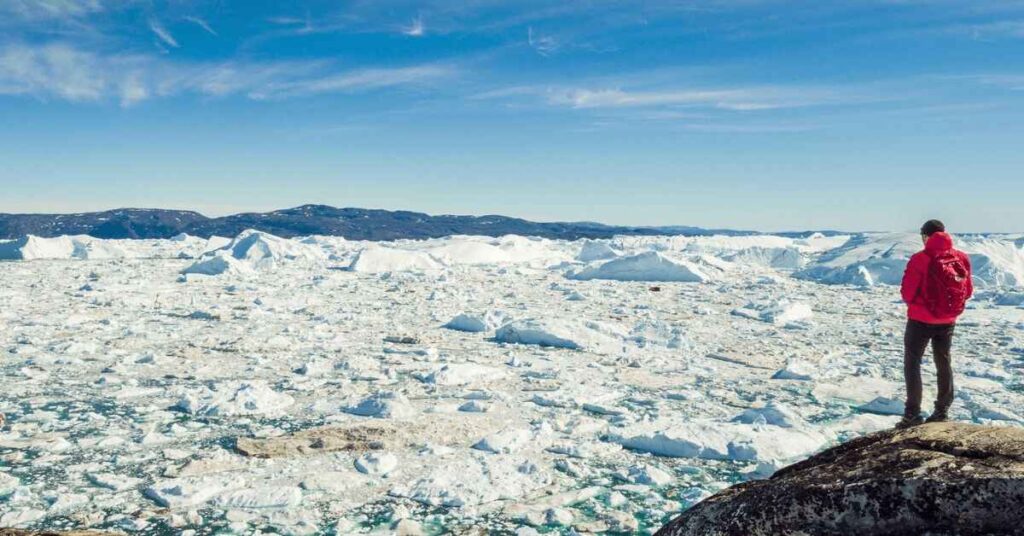
There is no international ferry service to Greenland, so most travelers fly into Kangerlussuaq from hubs like Oslo, Reykjavik, or Copenhagen. Kangerlussuaq is situated at the head of a picturesque 120-mile fjord and serves as the gateway to explore the world’s largest island. Air Greenland offers daily flights from Copenhagen, as well as weekly service from Reykjavik, while Icelandair also operates routes to Kangerlussuaq.
How to Get to Iceland
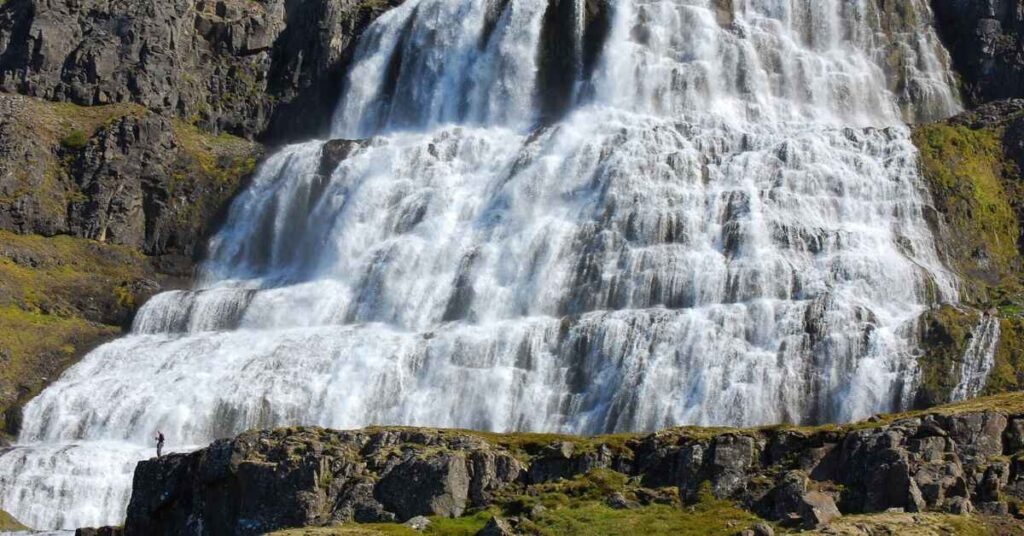
With over 20 airlines flying to Keflavik, Reykjavik’s international airport, getting to Iceland is relatively straightforward. From North America, carriers like United, Delta, Icelandair, Play, and Air Canada offer service, with flights from the eastern seaboard taking just over 5 hours. There’s also the option to take a multi-day ferry from Denmark to Iceland, with a stop in the Faroe Islands along the way.
How to Get to the North Pole
Reaching the North Pole itself is an immense challenge, with very few expedition cruise options available. The most common approaches involve flying there by airplane or helicopter from Svalbard, or traveling by icebreaker ship from Murmansk, Russia. For the most adventurous, overland expeditions by ski or dogsled are also possible.
How to Get to the Northwest Passage

As the Northwest Passage is located entirely within the Arctic Circle, this 900-mile route linking the Atlantic and Pacific Oceans via the Arctic Ocean has multiple access points.
Lindblad Expeditions-National Geographic arranges flights between New York City and Kangerlussuaq, Greenland, where guests embark on their voyages. They also provide flights between Nome, Alaska, the expedition’s endpoint, and Anchorage.
How to Get to the Canadian Arctic
Many Lindblad expeditions in the Canadian Arctic start in Greenland. Travelers cross the Davis Strait. From there, they can go north, west, or south. They explore remote places like Baffin Island, Ellesmere Island, and the Labrador coast.
Other operators offer Canadian Arctic trips starting in places like Resolute Bay, Iqaluit, Cambridge Bay, or Kugluktuk. Charter flights from cities such as Toronto, Ottawa, and Edmonton serve these gateways.
Why Visit the Arctic?
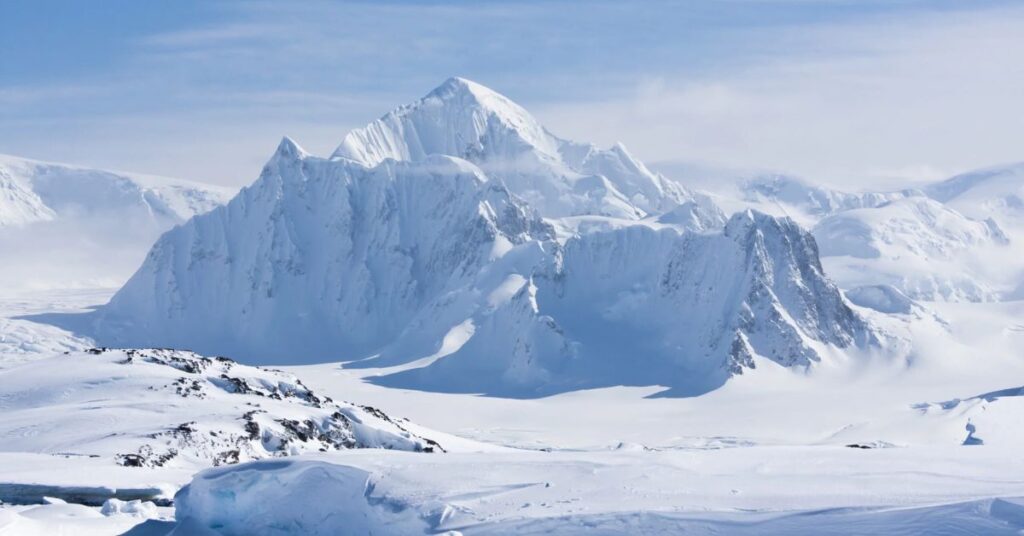
Traveling to the Arctic is often a life-changing experience, offering opportunities to witness awe-inspiring landscapes, iconic wildlife, and enriching encounters with indigenous cultures. Many consider expedition cruising the most rewarding, safe, and hassle-free way to explore this dynamic, icy region.
What Can I See in the Arctic?
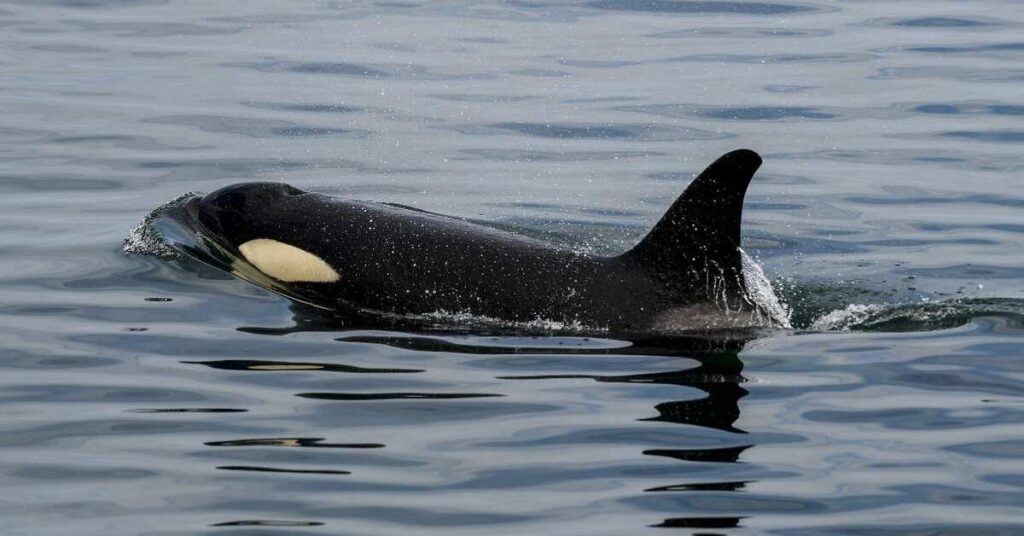
The Arctic is a nature lover’s dream, with the chance to spot incredible creatures like polar bears, reindeer, musk oxen, whales, seals, and a variety of seabirds. Beyond the wildlife, you’ll also marvel at stunning fjords, colossal icebergs, thundering waterfalls, and vibrant carpets of wildflowers.
What Can I Do in the Arctic?
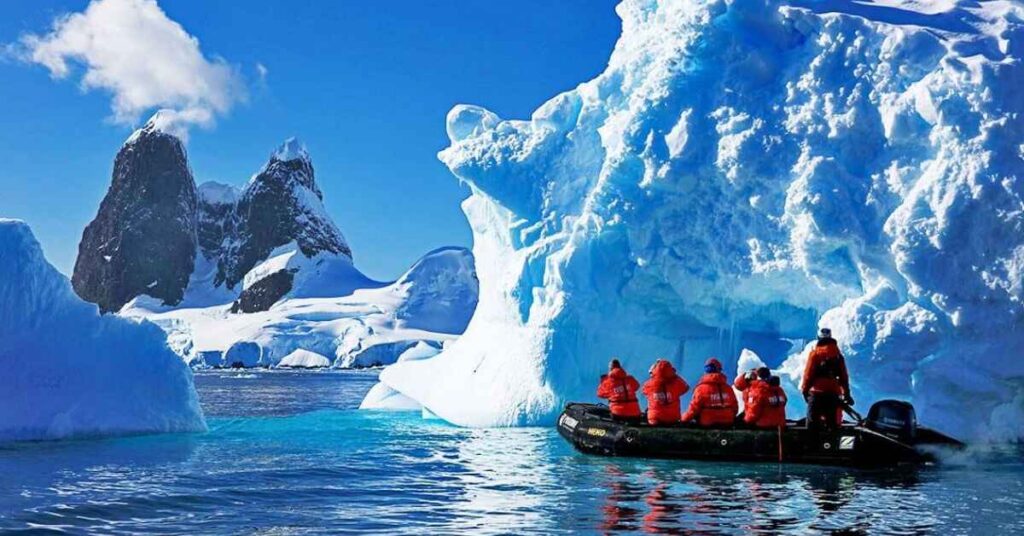
During your Arctic cruise, you’ll have the opportunity to partake in a wide range of excursions and activities. Get up close to iridescent icebergs and calving glaciers by Zodiac, hike along sea cliffs teeming with seabirds, or immerse yourself in Inuit culture.
You may even be lucky enough to witness the mesmerizing Northern Lights. Lindblad Expeditions-National Geographic’s Arctic voyages feature 10-12 expert staff. They offer in-depth knowledge on history, geology, wildlife, and photography.
How Do People Travel Around in the Arctic?
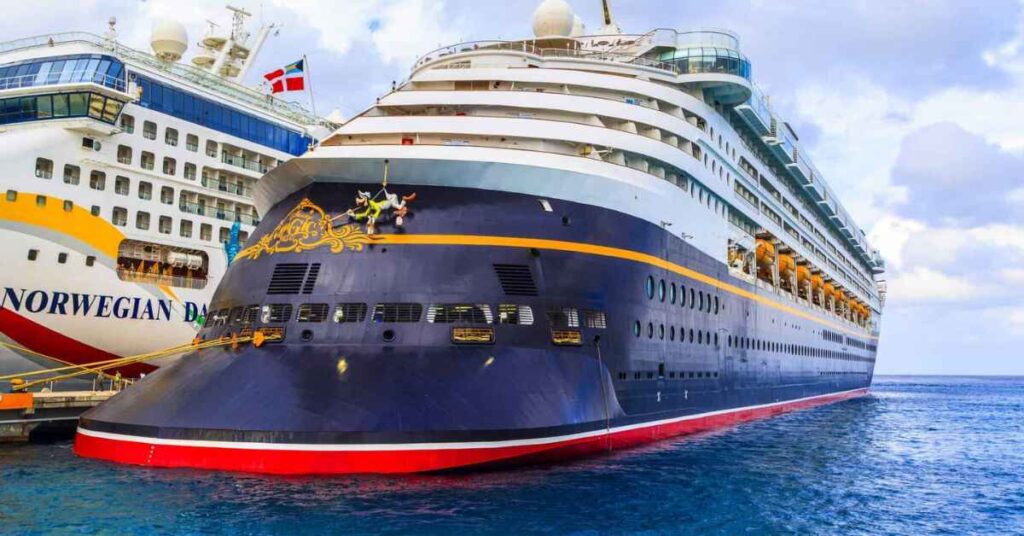
Given the vast distances, limited infrastructure, and extreme conditions of the Arctic, the most practical way to explore the region is on a purpose-built polar expedition vessel.
Lindblad’s small, ice-class ships are built to handle the tough conditions above the Arctic Circle. With over 50 years of experience in polar regions, their fleet boasts an exceptional safety record. These vessels are specially designed for navigating demanding environments.
Common Arctic Cruise Departure Ports
Your Arctic itinerary may start from several common departure ports. These include Kangerlussuaq in Greenland, Longyearbyen in Norway, Reykjavik in Iceland, Aberdeen in Scotland, and Murmansk in Russia. However, because of the ongoing conflict in Ukraine, Murmansk is currently off-limits for most travelers.
How Is the Arctic Different from Antarctica?
The Arctic and Antarctica are both remote, icy regions, but they differ in key ways. The Arctic spans multiple countries of varying sizes, while Antarctica is a single, vast landmass that forms the Earth’s seventh continent.
Conclusion
Getting to the Arctic Circle and the North Pole is a challenging but rewarding adventure. You can fly to Arctic towns like Tromsø or take a cruise through icy waters. Reaching the North Pole often involves special icebreaker ships or expensive flights. It’s a trip for those seeking extreme experiences and stunning, untouched nature. Remember, proper planning and preparation are essential for this unique journey.

A seasoned aviation enthusiast combines technical expertise with a conversational writing style offering readers an insightful and engaging journey through the interesting world of aviation and flights.
